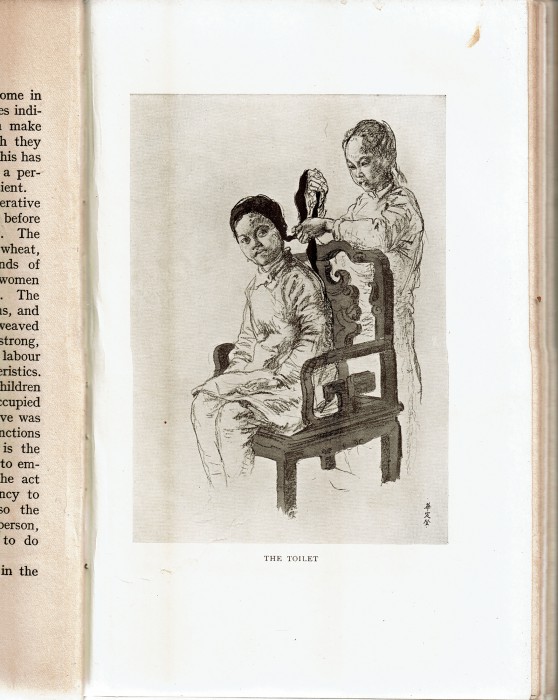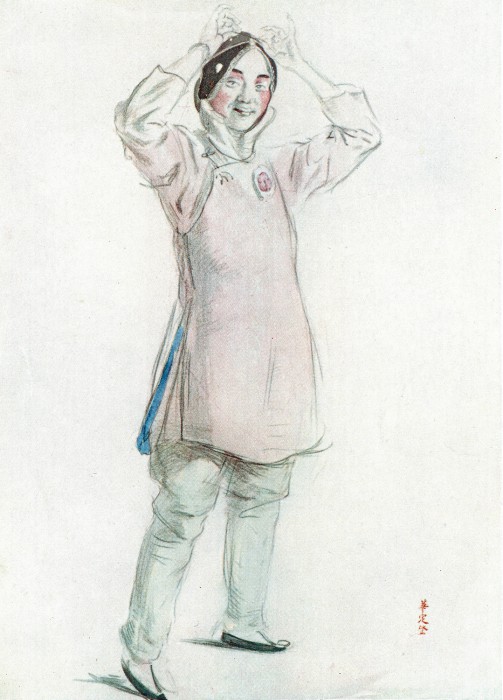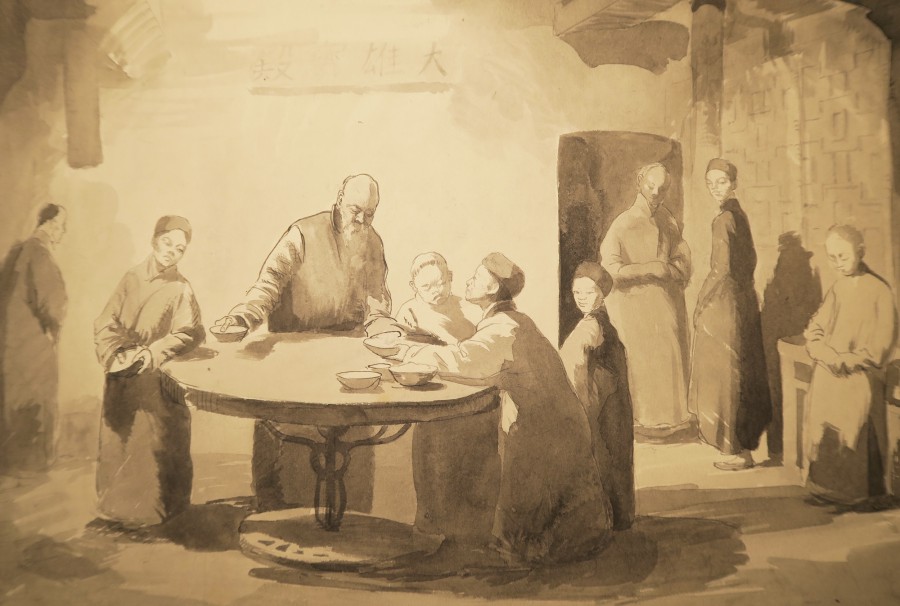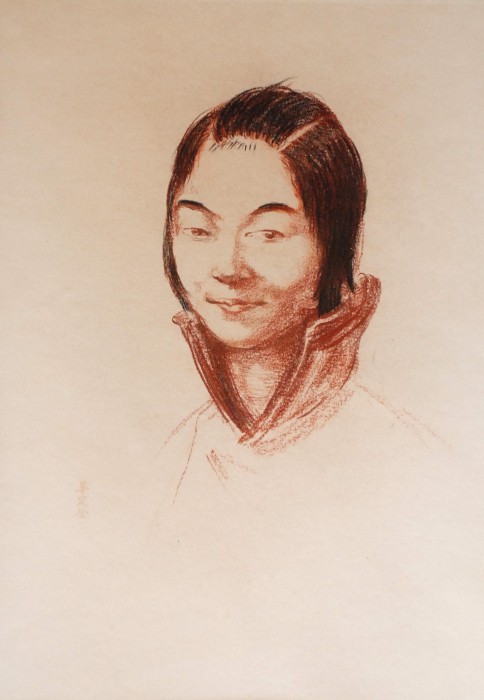The Chinese Drawings and Illustrations
In 1909 Vera travelled with her father and sisters Mabel and Daisy to China via the Trans Siberian railway, taking a month and a day to reach Shanghai, home to Vera’s sister Daisy and her husband Duncan McNeil. In China she drew and painted in different media a series of scenes and people taken from everyday life. It was unusual for European women painters to enter into such a cultural context, let alone concentrate on vernacular subjects. She sketched nearly every day, outside, and in local temples and homes.
On 26 November she describes going to the temple and drawing the old teacher. She also went to the home of one of the family servants to draw his children:
‘No 1 Boy said I might go to his house to draw his children so I went in the rickshaw. The one little boy of 4 was dressed up in bright colours and the 3 little girls all in grey’.
She sketched by lamplight at the temple and by electric light at the home of a family friend.
‘Went to the Bubbling Well Temple in a rickshaw- fetched four priests and took them round to Mrs Ronald’s. Had a most exciting day painting them by electric light.’
By April 1910 she had assembled a collection of drawings:
‘Had a very busy day arranging my drawings etc. round the walls of Duncan’s room mounted on blue Chinese paper on which checks. They looked very nice.’
They returned via Japan, Korea, the Tran Siberian Railway, St Petersburg and Scandinavia.
After her return to England, in December 1910, she had an exhibition of drawings and paintings at the Carfax gallery in London. The exhibition was well reviewed, praising her naturalistic drawing and positively comparing her work with that of the Post-Impressionists, and all the pictures were sold. Subsequently she used some of her watercolours to illustrate Home Life in China by Isaac Taylor Headland (Methuen and Co. 1914, reissued by Routledge, 2016).
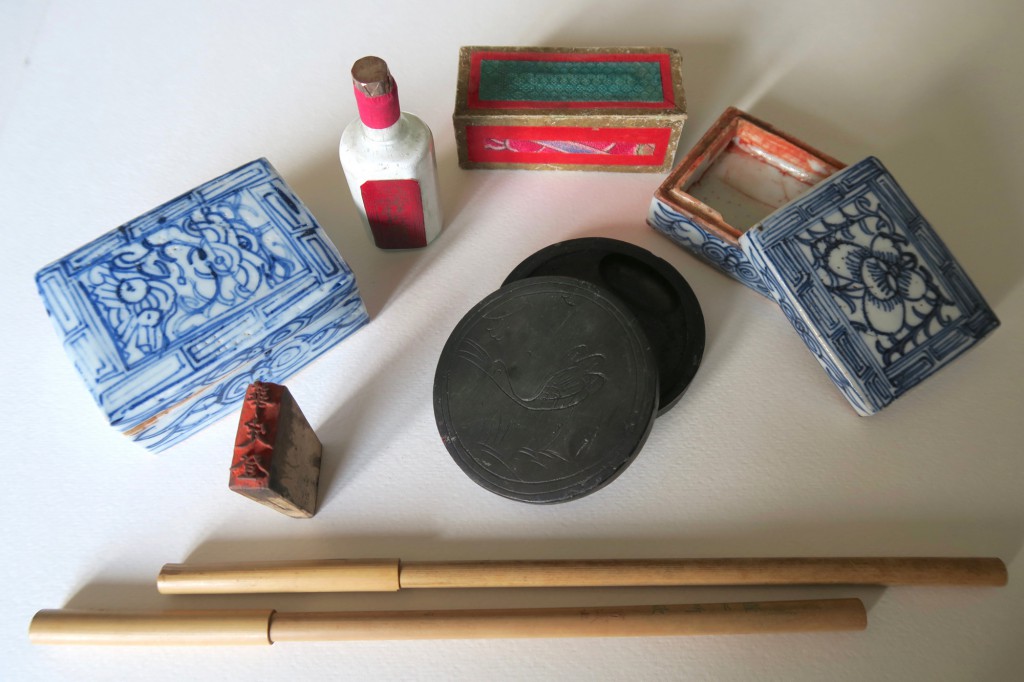 These were found in a Chinese box that Vera bought back from her travels in China. They include a seal inscribed in the Chinese characters for Waddington, which she used to sign her pictures, two boxes that originally contained an orange pigment and a sealed bottle of white powder, the purpose of which remains obscure. Any ideas?
These were found in a Chinese box that Vera bought back from her travels in China. They include a seal inscribed in the Chinese characters for Waddington, which she used to sign her pictures, two boxes that originally contained an orange pigment and a sealed bottle of white powder, the purpose of which remains obscure. Any ideas?